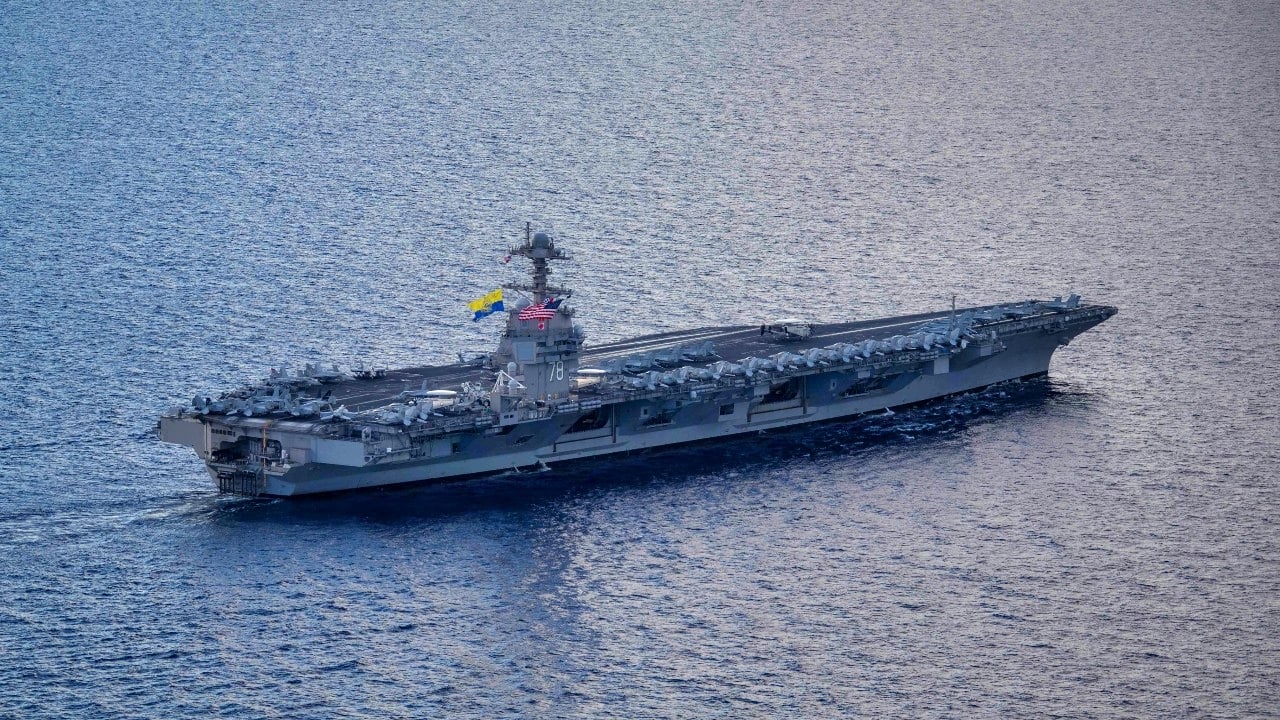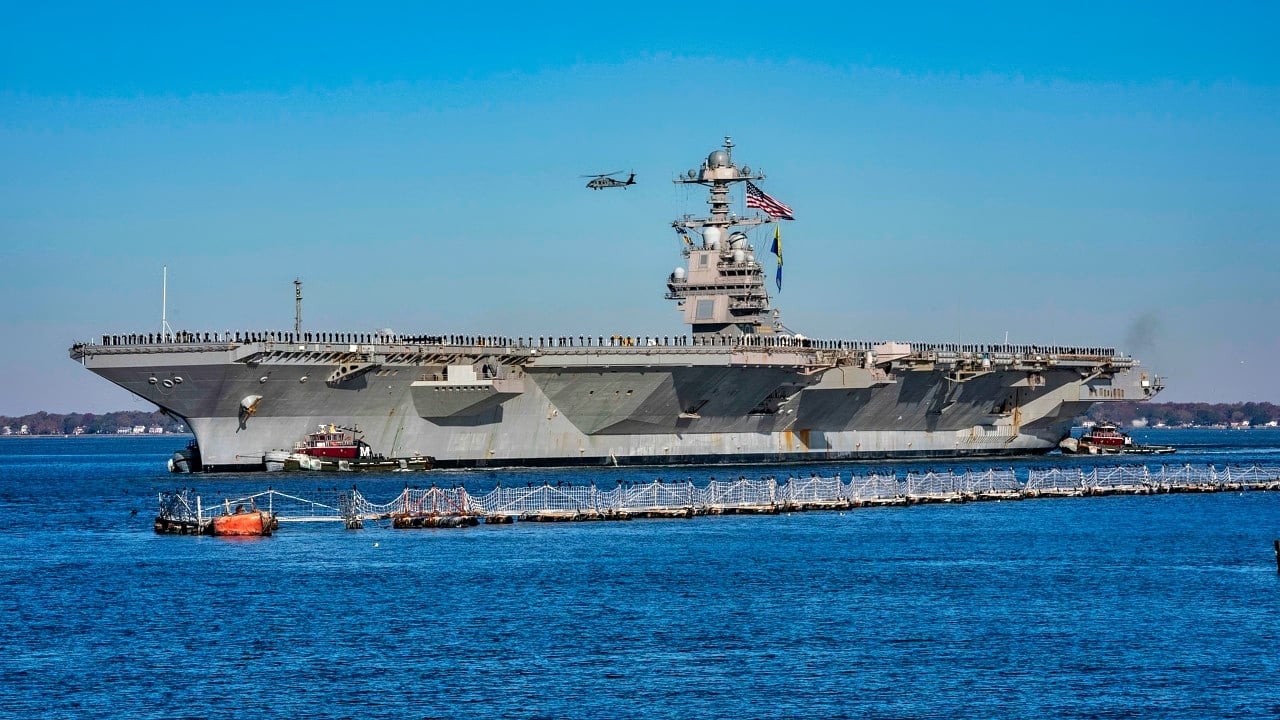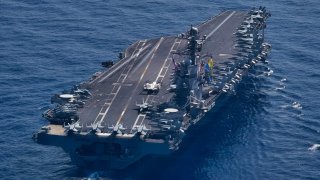USS John F. Kennedy: This Ford-Class Aircraft Carrier Could Be the Navy's Best Ever
The USS John F. Kennedy (CVN-79) is the second Ford-class aircraft carrier, set to join the U.S. Pacific Fleet in 2025. Originally scheduled for delivery in 2024, the carrier's completion was delayed to incorporate additional capabilities during construction, including the ability to field the F-35C Lightning II fighter jets and the Enterprise Air Surveillance Radar.
What You Need to Know - 3 Points: The USS John F. Kennedy (CVN-79) is the second Ford-class aircraft carrier, set to join the U.S. Pacific Fleet in 2025. Originally scheduled for delivery in 2024, the carrier's completion was delayed to incorporate additional capabilities during construction, including the ability to field the F-35C Lightning II fighter jets and the Enterprise Air Surveillance Radar.

-As the first Ford-class carrier in the Pacific, the Kennedy will enhance U.S. naval presence amid growing tensions with China.
-Featuring advanced technologies like the Electromagnetic Aircraft Launch System (EMALS) and reduced crew requirements due to automation, the Kennedy aims to improve efficiency and justify its $13 billion cost.
USS John F. Kennedy: The Navy's Newest Supercarrier Heads to the Pacific
The USS John F. Kennedy is a nearly-ready Ford-class aircraft carrier, which is scheduled to finally join the Pacific Fleet in 2025. The Kennedy will be the second in her class, after the namesake USS Gerald R. Ford, and will help the Navy continue its incremental phase-out of the fifty-year-old Nimitz class.
The Kennedy was originally supposed to be delivered in June 2024. Obviously, June 2024 has come with a delivery of the new supercarrier; the delay was, “so the service could alter the ship’s Post Shakedown Availability (PSA) and perform more work during construction,” as the U.S. Naval Institute (USNI) reported.
According to the Navy’s shipbuilding budget documents: “The Navy is implementing a strategy to pull baseline work from the Post Shakedown Availability (PSA) into the construction period to provide more capability at ship delivery.”
When the Kennedy is finally ready, she will become a presence in the Indo-Pacific, where friction between the United States and China has been building for years.
Joining the Pacific Fleet
The first delivered Ford-class, the Gerald R. Ford, is with the U.S. Sixth Fleet, which operates in the waters around Europe and Africa. The Kennedy, meanwhile, will become the first Ford-class to join the Pacific Fleet. As the Navy budgeting documents state, the Indo-Pacific assignment will “decrease the amount of time [Kennedy] would be required to be at the shipyard after ship delivery to conduct the PSA."
The Kennedy was originally scheduled to join the fleet in 2022, and then 2024, and now 2025. Tnitiain l delays were a result of a decision to include certain alterations with the original delivery, including the ability to field the F-35C Lightning II and the Enterprise Air Surveillance Radar. The decision was made because, originally, the Kennedy was going to be delivered without the ability to field the F-35C, an inadequacy that angered Congress, which mandated that the Kennedy be able to field the fifth-generation fighter from day one.

Cutting Edge Technology for an Aircraft carrier
The Kennedy, like its predecessor the Ford, will incorporate novel technologies. Most notably, the Electromagnetic Aircraft Launch System (EMALS). The EMALS replaces the traditional steam-powered catapult system found in the Nimitz-class. In theory, the EMALS will allow for the Ford-class to produce a higher Sortie Generation Rate (SGR), because the EMALS can be adjusted to launch more types of aircraft, and because the EMALS can regenerate and relaunch more quickly than the steam-based system. As an added benefit, the EMALS accelerates a plane more smoothly than the steam catapults, which produces less wear-and-tear on the airframe, reduces maintenance needs, and should extend the airframe’s lifespan.
The Kennedy will also feature a reduced crew size relative to the Nimitz, as much of the Ford-class’s systems have been automated. The reduction in crew size, in theory, will reduce operating costs over the lifespan of the vessel, which should help to justify the staggering upfront costs of $13 billion USD per unit.
About the Author: Harrison Kass
Harrison Kass is a defense and national security writer with over 1,000 total pieces on issues involving global affairs. An attorney, pilot, guitarist, and minor pro hockey player, Harrison joined the US Air Force as a Pilot Trainee but was medically discharged. Harrison holds a BA from Lake Forest College, a JD from the University of Oregon, and an MA from New York University. Harrison listens to Dokken.
Image Credit: Creative Commons and/or Shutterstock.


